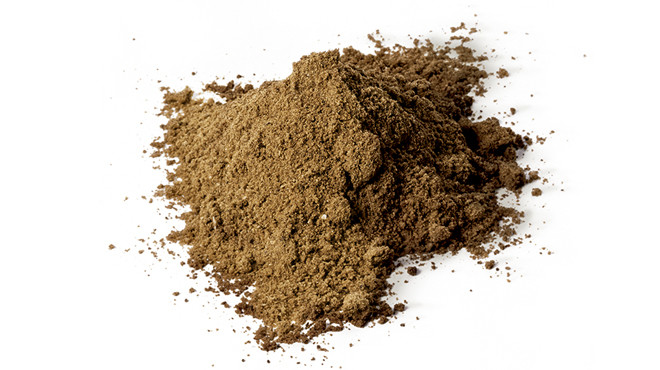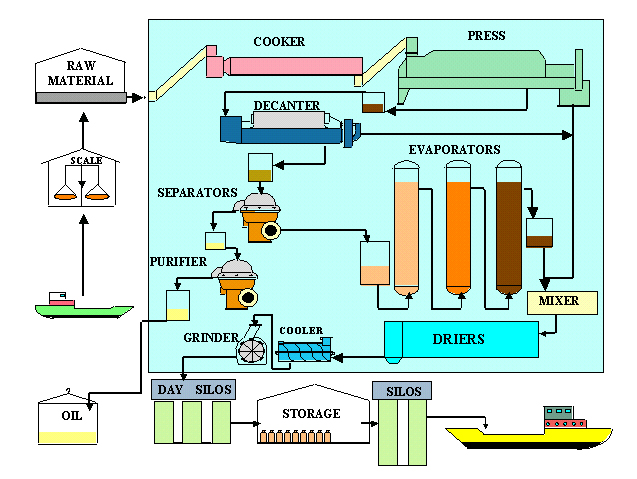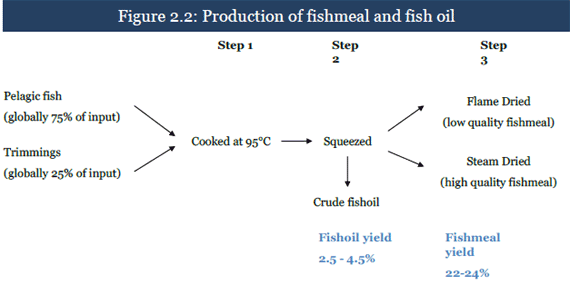 Fishmeal
Fishmeal
The objective of this mailer is to show you how fishmeal is made so you can utilize this knowledge when introducing our Fish Powder.
Why? Fishmeal is our competition, more common than fish powder. Fishmeal is a good product but it is not as good as fish powder when used as fertilizer. Fishmeal also costs less to manufacture as it is mostly an automatic process. Plus the fish oil and fish soluble that is extracted is sold separately. So if you run into a situation where fishmeal is being sold cheaper (rare but it happens), now you know why.
Study this information well. It will help you when making a presentation and close the deal.
FYI Sigma also manufactures fishmeal (over 25 years) and has in the past sold it for use as a fertilizer but there are differences that are worth mentioning.
Ocean Fish vs other fish – The best and richest fishmeal or fish powder is made from fresh whole wild-caught ocean fish species which include sardines, anchovies, ribbon fish, and mackerel. The biggest reason is diet. Oceans are loaded with marine nutrients. River fish diets are limited. Farmed fish is at the bottom of the list as farmed fish is fed mostly vegetable proteins. (no fishmeal in their diets or other marine nutrients)
What is fishmeal? Fishmeal is a dried marine powder. It is a product obtained through cooking, pressing, hot drying, and milling processes. Fishmeal constitutes an excellent source of nutrition for aquaculture and animal husbandry (e.g. poultry, piglets, young calves/lambs, furred animals, pets, and in fish and shrimp). Read More
Process


Note Step 2 – In this step the fish is squeezed where liquids are extracted (fish oil and fishy water). As you will see, the fish oil yield falls between 2.5% and 4.5% of the bulk raw material. i.e.: 100 MT of raw material (fish) will yield between 2.5 MT and 4.5 MT of fish oil.
What determines the yield? The fish species and the fat content of the fish. Sardines, anchovies, and mackerel are at the top of the list as these are oily fish with high content of Omega-3 fatty acids (EPA and DHA).
Sigma’s products include all 3 exclusively. U.S. fishmeal producers in the Gulf area use whole menhaden. New England and Pacific fisheries use fish trimmings of fish for human consumption to make fish fertilizers (liquid). None make fishmeal or fish powder as there is not raw materials in trimmings to do so. Liquid is their only offering. Water being a large percentage of the product.
Note Step 3 – This is where better manufacturing techniques help to increase yield and quality. Our super prime fishmeal lines with newer equipment and up to date software on average yield 25-26%. In other words based on Figure 2.2 above, a 22% yield is equivalent to 4.5 MT of raw materials needed to yield 1 MT of fishmeal. 24% is equivalent to 4.1 MT of raw materials per 1 MT of fishmeal.
In our 25-26% yield, a more efficient manufacturing process it takes 3.9 to 4 MT to yield 1 MT of fishmeal.
FYI – The supplier in Mexico that claims that it takes 5 lbs. of fish to yield 1 lb. of fishmeal is acknowledging that their manufacturing process is mediocre at best. Basically their statement says that their yield is only 20%. (5/1 ratio). It also indicates high heat manufacturing which means lower end product. Heat changes the amino acid profile and nutritional value of fishmeal. Best fishmeal are LT Steam Dried. (LT= low temperature)
Remember it is not concentrated. Fishmeal is the end result of chopping, cooking, squeezing, hot drying and grinding raw fish.
Sigma fish powder is manufactured differently. It is made from fresh whole-wild-caught ocean fish. Fish is sun dried and milled to 5 mm mesh powder. No beneficial oils, collagen or lipids are removed.
Next mailer: Fishmeal and Fish Powder Price and Differences